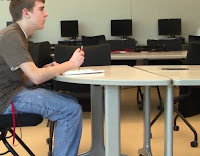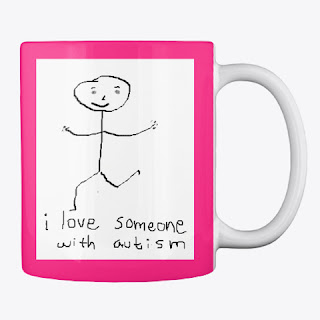 “Are there some tips that my high functioning autistic daughter’s teacher could use to help her with things link reading, handwriting, taking notes, staying organized, homework, and so on? She’s currently struggling in several of these (and other) areas. Thanks in advance!”
“Are there some tips that my high functioning autistic daughter’s teacher could use to help her with things link reading, handwriting, taking notes, staying organized, homework, and so on? She’s currently struggling in several of these (and other) areas. Thanks in advance!”Many students with High-Functioning Autism (HFA) and Asperger’s do indeed struggle in those areas you listed. Let’s look briefly at each in turn:
Reading—
The amount of reading the student on the autism spectrum is expected to complete should be evaluated by the teacher. These “special needs” children (who sometimes read slowly and can’t discern relevant from irrelevant information) spend a lot of time concentrating on facts that will not be tested and are considered unimportant.
Highlighted texts and study guides help them maximize their reading time. Educators also should consider identifying the information the student is responsible to learn for an upcoming assignment or test.
Handwriting—
Handwriting is a concern for many kids on the spectrum. Thus, educators should offer them several ways to demonstrate mastery, including (a) giving verbal responses instead of written essays, (b) using the computer instead of a pen or pencil, (c) completing a multiple-choice rather than a short-answer test, and (d) creating a project rather than writing a report.
Note-taking—
Many children with HFA and Asperger’s have difficulty taking notes in class. Often, motor-skills deficits prevent them from getting important content onto paper. In addition, some have difficulty listening and writing at the same time (they can do both, but often not at the same time).
Depending on the amount of assistance they need, the teacher can provide (a) a complete outline including the main idea and supporting details, (b) a skeletal outline that they can use to fill in details, (c) a peer-constructed outline, and (d) the opportunity to use outlining software.
Graphic Organizers—
Graphic organizers highlight important concepts and display the relationship between them. They provide abstract or implicit information in a concrete manner. Graphic organizers can be used before, during, or after these students read a selection – either as an advanced organizer or as a measure of concept attainment.
Three commonly used graphic organizers are semantic maps, analogy graphic organizers, and timelines.
- Semantic maps: The focal point of the semantic map is the key word or concept enclosed in a geometric figure (e.g., circle or square) or in a pictorial representation of the word or concept. Lines or arrows connect this central shape to other shapes. Words or information related to the central concept are written on the connecting lines or in the other shapes. As the map expands, the words become more specific and detailed. In addition, semantic maps can use pictures for the key words or concepts.
- Analogy graphic organizers: These contain two concepts and their attributes. The teacher and student define how the two concepts are alike and how they differ, then draw a conclusion. Often the teacher has to assist the youngster in identifying attributes by presenting choices, either written or pictorial, from which the he or she can select. This task can be completed individually, in small groups, or with an entire class.
- Timelines: These provide benchmarks for completing tasks and thereby aid the student in budgeting his or her time. Timelines consist of a list of steps needed to complete the task with concomitant due dates. This visual representation enables the student and teacher to monitor progress toward project completion. Ideally, educators enlist the aid of parents in developing and monitoring timelines to ensure the student follows through at home.
Homework—
Educators and parents should work together to determine whether or not homework should be assigned, and if so, how much. Because students with HFA and Asperger’s need structure, it is often best for educators to assign tasks that the student can complete in the structured school environment.
If homework is assigned, an assignment notebook and a parent-teacher communication system will help parents monitor their youngster's homework. In some cases, the parent may have to model the task for his or her child. Therefore, educators should ensure that the parent understands the youngster's homework.
To facilitate home-school communication, schools can establish a "homework line" that both the parent and child can call to hear an overview of assigned work. This system is ideal for students on the autism spectrum.
More resources for parents (and teachers):
==> How To Prevent Meltdowns and Tantrums In Children With High-Functioning Autism and Asperger's
==> Parenting System that Significantly Reduces Defiant Behavior in Teens with Aspergers and High-Functioning Autism
==> Teaching Social Skills and Emotion Management to Children and Teens with Asperger's and High-Functioning Autism
==> Parenting Children and Teens with High-Functioning Autism: Comprehensive Handbook
___________________
Do you need the advice of a professional who specializes in parenting children and teens with Autism Spectrum Disorders? Sign-up for Online Parent Coaching today.
















.jpg)


